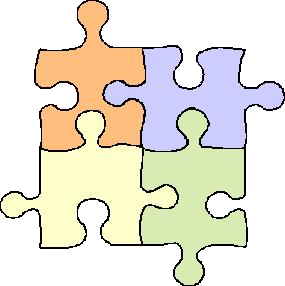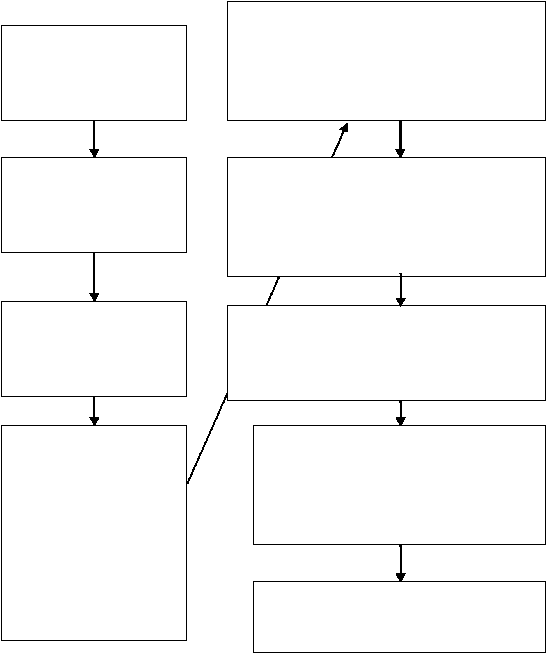
USD 261 - HAYSVILLE
PROFESSIONAL DEVELOPMENT COUNCIL
HANDBOOK!
2012-2016
Submitted to the Kansas State Board of Education
Under the Provisions of the State Inservice Education Plan

TABLE OF CONTENTS
|
| History of the Professional Development Council Plan & How It Applies To You | 3 |
| PDC General Overview | 4 |
| USD 261 District Mission Statement & Vision | 5 |
| Three – Tier Point System (Levels Of Implementation) | 8 |
| AREAS | 8 |
| LEVELS | 8 |
| Content | 8 |
| Knowledge | 8 |
| Application | 8 |
| Impact | 8 |
| IPDP | 10 |
| Example 1 | 11 |
| Content | 11 |
| Knowledge | 11 |
| Application | 11 |
| Impact | 11 |
| Example 2 | 12 |
| Content | 12 |
| Knowledge | 12 |
| Application | 12 |
| Impact | 12 |
| Example 3 | 12 |
| Content | 12 |
| Knowledge | 12 |
| Application | 12 |
| Impact | 12 |
| Points Awarded For Student Teachers Or Practicum Students | 12 |
| The IPDP Form – All Amendments | 13 |
| How To Use Your Inservice Points For Renewal Of Certificate Or License | 15 |
| How To Combine Inservice Points And/Or College Hours | 16 |
| Information Included On Official Transcript | 17 |
| My Learning Plan Quick Reference Guide | 18 |
| Professional Leave Request Form | 18 |
| Committee Meeting Form | 19 |
| Graduate Course Form | 19 |
| Curriculum Project | 19 |
| Professional Development Council Information | 20 |
| My Professional Learning Checklist | 22 |
| · | Level 1 – Knowledge: Teachers know something that was not known before. | ||
| · | Level 2 – Application: Teachers consistently use this knowledge and skill on the job. | ||
| · | Level 3 – Impact: Student learning is improved and this is demonstrated by appropriate assessments that are aligned with specific improvement targets. | ||
PDC General Overview
In order to provide opportunities for certified staff members (and support personnel when applicable) to grow professionally through the acquisition of knowledge, application of knowledge, and impact of application on student achievement, a structure and process has been developed. The steps below provide a general overview of the process outlined in USD 261:
| 1. | Each participant must write an Individual Professional Development Plan (IPDP) containing district, building, and individual goals that will be addressed through various approved activities, strategies or interventions. This plan must be filed through MyLearningPlan and approved by the building administrator by September 30 . An IPDP must be completed by every certified staff member each year whether the individual will be collecting points toward recertification. The IPDP serves as the applicant’s agreement to participate in learning opportunities provided by the district. | ||
| 2. | Any activity for which an individual could potentially earn points must be documented with the appropriate form on MyLearningPlan and demonstration of established criteria included as outlined in the Professional Learning Plan. | ||
| 3. | Recertification points will be awarded at the rate of 1 point per clock hour after the PDC reviews and approves appropriate documentation. | ||
| 4. | Due dates for documentation of completed activities will be one month after completion with the exception of any activity completed near the end of April. All activities to be included on the current year’s transcript must be completely documented and approved by May 1 . | ||
| · | What are all students expected to know and be able to do? | |
| · | What must teachers know and do in order to ensure student success? | |
| · | Where must professional development focus to meet both goals? | |
| All learning activities addressed in this plan should align with: | ||
| · | District mission, priorities, and professional development goals | |
| · | NCA/QPA school improvement goals | |
| · | Impact on student learning | |
| · | Individual improvement in instructional skills and certification/professional teaching standards | |
USD 261 District Mission Statement & Vision
The mission of the Haysville Public Schools is to advance learning for all through the relentless pursuit of excellence. Our vision is to equip learners with 21st Century Skills to achieve excellence in a continually-changing world.
Belief Statements of USD 261:
We believe:
| · | Our primary responsibility is teaching and learning. | |
| · | Students come first. | |
| · | All members of our learning community add value. | |
| · | Relevance + relationships + rigor = engaged learning. | |
| · | School, community and business partnerships enrich student learning. | |
| · | Learning is enhanced in a safe and caring environment. | |
| · | In quality staff committed to excellence. | |
| · | In exploration, innovation, collaboration and growth. | |
| · | In integrity of word and deed. | |
| · | Students need a rigorous, relevant world class curriculum. | |
| · | In data-driven, continuous improvement for all. | |
| · | Diversity is an asset. | |
| · | Modern technology is an essential tool for teaching and learning. | |
| · | In fiscal responsibility. | |
| · | Support staff through the systematic development and implementation of instructional tools, practices, and technologies to ensure student learning. Develop showcase programs in academics, athletics and activities while ensuring all students are prepared for life. | |
| · | To recruit, develop, and retain a high quality workforce. | |
| · | To create and enhance modern, safe learning facilities to achieve excellence. | |
| · | Strengthening community pride through strategic partnerships. | |
| · | Ensuring district financial resources to provide for the success of students, workforce and community. | |
| · | District staff members will complete the curriculum alignment with State standards both vertically and horizontally and provide opportunities for annual review; standards of performance at appropriate grade levels will be developed and reviewed annually; a means of assessment to determine whether or not students have met standards will continue to be utilized. Review of State standards will be done annually to allow training for classroom teachers who must implement effective strategies. | ||
| · | Data analysis will be used to develop an array of plans to identify weaknesses in student performance with attention given to State assessment results in reading, math, and writing. A plan, including training, for differentiating instruction will be devised to address all students and their learning styles. Professional learning communities will provide an avenue through which curriculum alignment, data analysis and differentiated instruction can be implemented. | ||
| · | In order to effectively proceed through the school improvement and accreditation process, district staff members will be informed and trained in the QPA/NCA programs and become knowledgeable in the federal legislation titled “No Child Left Behind”. | ||
| · | Staff members will utilize technology to support and enrich curriculum and instruction. | ||
| · | Mentor training along with a guide will be developed to pair experienced teachers with teachers new to the district. Recruitment, orientation, and mentoring/induction will be tied together in an effort attract quality employees and retain them once employed. | ||
| · | Small learning teams/groups will be created and time scheduled to create opportunities for collaboration in creating quality instruction and curriculum. | ||
| · | Staff members will continually review and assess student performance in reading comprehension through strategies and assessments adopted for school improvement. | ||
| · | Staff members will continually review and assess student performance in their ability to problem solve as it relates to mathematics. This will be done through strategies and assessments adopted for school improvement. | ||
| · | Staff members will continually review and assess students’ abilities to communicate through the written word. Strategies and assessments adopted for school improvement will be used to determine students’ abilities. | ||
| · | Each building leadership team will develop a yearly plan for staff development so that it is ongoing and job embedded. | ||
| · | Demonstrate the mastery of essential skills in the academic areas of language arts, science, mathematics, social science, physical education, general technology, and the fine and applied arts based on grade level, course and unit outcomes that are aligned with State standards; | ||
| · | Demonstrate ability to apply technological concepts, principles, and systems in an ever-changing world; | ||
| · | Demonstrate ability to use critical thinking, problem solving, and decision making skills to analyze and evaluate various forms of information; | ||
| · | Demonstrate willingness and ability to work with others; | ||
| · | Demonstrate that responsible citizens achieve change through the democratic process; | ||
| · | Demonstrate behaviors that exhibit a positive self-concept; | ||
| · | Demonstrate pride in individual excellence; | ||
| · | Demonstrate respect for ethnic diversity and multi-cultural heritage; | ||
| · | Demonstrates practices of a physically and mentally healthy life-style; and | ||
| · | Demonstrate ability to communicate effectively. | ||

 ACTIVITIES/ACTIONS FOR TEACHERS AND ADMINISTRATORS
ACTIVITIES/ACTIONS FOR TEACHERS AND ADMINISTRATORS
| LEVELS of
IMPLEMENTATION |
ACTIVITIES & POINTS
(as approved by PDC) |
EVIDENCE
(as approved by PDC) |
| Knowledge
“What do I know that I didn’t know before?” |
1 point = 1 hour
ü Study Groups ü Workshops/Conferences ü Online Courses ü Visits to Other Schools ü Observations ü Book Reads ü College courses at this level are 20 points = 1 credit hour (must be submitted in 30 calendar days) |
Required:
ü Written personal reflection (complete electronically) and ü Seat Time |
| Application
“What am I doing now that is different than what I did before?” |
2 x Knowledge Level Points
|
With prior approval, documentation
may include, but is not limited to: ü Student work samples ü Student interviews ü Structured interviews ü Selfreflection log ü Peer observation with conferencing/feedback ü Log from observer ü Documented practice with feedback ü Video/audio tapes ü Surveys ü Lesson plans accompanied by student work samples ü
Written documentation from team meetings/study groups
|
| Impact
“What are the results of my professional learning and growth?” |
3 x Knowledge Level Points
|
Forms of approved formative/summative evidence:
ü District approved assessments ü Levelized assessments ü Writing Portfolios ü Ongoing Progress Reports (i.e., IEP progress reports, …) ü Alignment to standards ü District, grade, or content area curriculum revisions |
| LEVELS of
IMPLEMENTATION |
ACTIVITIES & POINTS
(as approved by PDC) |
EVIDENCE
(as approved by PDC) |
| *Service to Profession
“What am I doing to serve others in the profession?” that directly relates to licensure of professional educators, accreditation processes, or professional organizations. |
1 point = 1 hour
(Knowledge Level only)
ü Presenting Staff Development ü Mentoring ü Supervision of a Student Teacher ü Building/District PDC ü Building Leadership Team ü District Leadership Team ü QPA/NCA Teams ü Curriculum Committees ü Publishing Articles/Newsletters ü Visiting Teams (on-Site) for Other Districts
|
Forms of approved evidence: With prior approval, documentation may include, but is not limited to:
ü Log of information shared or results of committee meeting ü Written documentation of facilitation of study group ü
Written documentation of actions taken/processes completed of work groups
|
Individual Professional Development Plan (IPDP) Process Chart


| Assess individual need(s). | |
completing trainings, workshops, study groups, college courses, etc. and validate. (1 hr. = 1 pt.)
| (must be submitted within 30 days of completion of activity) | |
KNOWLEDGE
must be validated in 2 of the 3 areas: Content, Professional Standards, or Service to the Profession
Collaborate with designated supervisor (administrator).
Implement APPLICATION of
skills/strategies from Knowledge level
over the course of at least a semester. Collect evidence as approved by the PDC.
|
Submit data driven evidence of improved student performance as approved by PDC.
(3 x Knowledge Level Points)
Inservice points earned through the IPDP process may be used for renewal of licensure. The Professional Development Plans for Licensure Renewal as outlined in the Kansas Inservice Program Regulations are as follows:
college credits from the appropriate college or university to be used for licensure renewal. Both transcripts must be attached to the renewal application sent to the state. A request for an official inservice transcript must be made to the PDC Chair at least 30 days prior to your recertification filing date. Any questions about inservice transcripts should be made to the PDC Chair.
The Building PDC
implementation, and evaluation of the Results-based Professional development component of the School Improvement Plan
(NOTE: The building administrator reads and approves IPDPs when submitted initially.)
District Level PDC:
The district Professional Development Council (PDC) is responsible for the development and management of policy and procedures regarding individual, building, and district-level professional learning opportunities. It is the responsibility of the District PDC to develop a local five-year plan for professional learning that is approved by the local Board of Education and that meets the criteria established by the Kansas State Board of Education. These criteria are:
Does it:
Determine KNOWLEDGE level
professional growth activities;
write and submit IPDP
(electronically) to the Building
PDC for approval.
Analyze data and progress toward
goal(s) to determine IMPACT.
Validate IMPACT with PDC.
Three-Tier Point System
The new three-tier point system allows for points to be awarded in three areas. The points for Content and Professional Education are doubled at the Application Level and tripled at the Impact Level.
In order to recertify an individual must earn points in 2 of the 3 areas designated at the top of the chart within the period of their individual license.
i.e. reading, math, science, history, phys. ed., etc.
i.e. learning strategies or modalities, pedagogies, etc.
i.e. SIT Team, NCA, QPA, Committees
What do I know that I didn’t know before?
What am I doing that I didn’t do before?
2 x Knowledge Points
2 x Knowledge Points
XXXXXXXXXXX
How did I change student performance or how teachers teach? What can I present or share to show teachers how to change curriculum or instruction?
3 x Knowledge Points
3 x Knowledge Points
XXXXXXXXXXX
Examples of How Staff Development Activities May be Classified and How Points May be Accumulated:
Standards
In December, attended 6-hr. inservice about reading instruction
Re: Reading Academy = 6 pts.
After developing lesson plans and preparing during Jan.- May, I instructed 24 summer reading students using Reading Academy = 12 pts.
My pre- (June) and post- tests (August) document the success of my program. Shared success with principal in August and at Sept. faculty meeting. = 18 pts.
Total Points = 36
Total Points = 7
Served on the Math Committee – 3 hours
Served on Building Leadership Team – 4 hours
Total Points = 28
Attended inservice on student learning styles = 4 pts.
Added two new strategies addressing student learning styles to my lesson plans = 8 pts.
Carefully documented; shared results in presentation at the KSDE Effective Schools Conf= 16 pts.
Points Awarded For Student Teachers Or Practicum Students
Points will be awarded (one point per hour) to the cooperating teacher for time spent providing technical assistance or support to the student teacher or practicum student. Points will not be provided for hours that the student teacher or practicum student is just present in the cooperating teacher’s classroom teaching or observing. To receive points, the cooperating teacher needs an approved IPDP listing a goal addressing coaching/mentoring a student teacher or practicum student.
Guidelines to Submit Forms
In May, each building submits an “Inservice Plan” for the following year to the PDC. Upon approval by the PDC, the building plan is submitted to the Board of Education in June for approval. The inservice information provided by your building is used to develop an Individual Professional Development Plan (IPDP), which is unique to you and your school. The IPDP constitutes your agreement to participate.
The IPDP is required of all teachers and administrators!
·
Is available through the MY LEARNING PLAN program at www.mylearningplan.com
.
·
Must be approved by your building administrator and filed through My Learning Plan. Don’t forget to submit at the bottom of the page when completing the form.
Print a copy for your records when complete.
·
Will not earn you any points until you complete various activities and submit the appropriate forms for approval through My Learning Plan.
The IPDP Form – all AMENDMENTS
Inservice opportunities occur throughout the school year. To participate in those not designated on your original IPDP:
·
Visit with your building administrator or PDC representative so that he/she may edit your original plan in My Learning Plan if you are unable to do so.
·
Add appropriate personal goals to your profile in My Learning Plan.
·
A plan may be amended at any time with approval of the building administrator.
Knowledge Level or LET THE POINTS COUNT!
For all activities, submit the appropriate activity form from the menu at the left-hand side of the screen when you log into My Learning Plan. You will have a choice of
û
Leave Request
û
Curriculum Project
û
Conference/Workshop
û
Graduate Credit
û
Committee Meeting
(The appropriate form will depend upon the activity.)
You will only fill out one form and take that form through pre-approval, approved and in progress, then to final approval where the activity will then be displayed in the “Most Recently Completed” window.
Activities considered building inservice or any type of activity that does not require a leave of absence with a substitute in which there are a large number of district participants can be accessed through the district catalog in My Learning Plan. Building administrators and district curriculum directors will have the ability to place activities in the catalog.
·
Points will be awarded in a 1-point per contact-hour basis.
·
No partial points will be awarded for less than one full-hour of inservice.
·
Please remember to submit or save the form after completion.
·
Mark Relicensure.
Application Level or DEMONSTRATE/MODEL!
You are ready to take the Knowledge that you gained and change your instruction. You have reached the level where you can demonstrate or model what you learned at the inservice.
To take an activity to the application level, you must have earned knowledge level points for a specific activity and have that entered through My Learning Plan. Once the activity is completed and approved, then click on the title of that activity from the “Most Recently Completed” window. You will be given the option to fill out a request for application level form. The form must be filled out completely and then an administrator and/or PDC representative from your building will need to document over time the application of the knowledge.
Some of the forms of documentation that may be used (you must verify two of the following):
Lesson Plans Video/Audio Tape
Samples of Work Interview with Supervisor
Journal, Portfolio Other (approved by PDC)
·
Points will be awarded at 2 times the number of knowledge level points earned.
·
Please remember to submit or save the form after completion.
·
This form will go through the same type of approval process as the other activity forms.
Impact Level or HAS STUDENT PERFORMANCE IMPROVED AS A RESULT OF APPLICATION?
You have the knowledge and the skills, so how is that impacting student performance? How are you changing the quality of education in your building, district, or beyond? Evidence of impact upon student performance or school improvement shall be presented to the professional development council.
At this level your points are tripled! For example: if a person completes a 6-hour training, he/she would receive 6 Knowledge level points; if he/she can demonstrate application, he/she would receive an additional 12 points for a total of 18 points; if the teacher can later provide evidence of impact on students or adults they would receive an additional 18 points (3 x 6 Knowledge points) in addition to the accrued 18-points for a total of 36 points.
Again, caution! A teacher cannot automatically jump from Knowledge to Impact. Your preparation before you teach the lesson or new strategy should include personal research, development, discovery, or research of appropriate materials, and carefully constructed lesson plans. This process may take longer than one school year. You are encouraged to strive for quality instruction and not the “quick fix”. Therefore, the time to accomplish your goal may vary. If your activity does go beyond the school year, please notify the PDC in writing of your intentions before May 1stof the current year.
Documentation that may be used to verify the impact of knowledge that has been applied:
Surveys/Results Data Collected
Project/Portfolio Video/Audio Presentation
Written Paper Action Research Documentation
Other (prior approval by PDC)
Once an activity has been approved through the application level, then the participant may have the option to click on the “Most Recently Completed” activity title and apply for impact level points (in much the same way as the application level form works).
Acceptable Activities for IPDPs (This is not an all-inclusive list.)
·
School Improvement Goals/Strategies
·
Reading, Math (problem solving), and Writing
·
Knowledge/Skills in the content areas
·
State Standards Training
Effective Instructional Practices
·
Discipline/Class Management
·
Use of Technology
·
Collaborative Teaming
·
Leadership/Group Facilitation
·
Quality Assessments
·
Multiple Intelligences/Differentiating Instruction
·
Motivation
·
Critical Thinking Skills
·
Action Research
Building/District PDC
·
Building Leadership Team
·
District Leadership Team
·
QPA/NCA Teams
·
Curriculum Committees
·
Conducting Training Workshops/Inservices (Staff Dev.)
·
Publishing Articles/Newsletters
·
Visiting Teams (On-Site) for other Districts
·
Supervision of student teachers
·
Mentoring
Activities That Will Not Be Approved
Business Meetings (Faculty, Dept.)
·
Participation on Paid Committees (*Consideration may be given if a Distric Product is the result of work. Prior approval required.)
·
Back to School Meetings (Insurance, Bloodborne Pathogens)
·
Membership in Professional Organizations (Business/Networking meetings)
·
Supervision of Sporting Events, Plays, Concerts, etc.
HOW TO USE YOUR INSERVICE POINTS FOR RENEWAL OF CERTIFICATE OR LICENSE

If you hold a current BACHELOR’s DEGREE:
o
Earn 160 professional development points with an approved Individual Professional Development Plan (IPDP).
o
At least 80 of the 160 points must be college or university credit hours (1 hour = 20 points).
o
Appropriateness of college credit must be approved by the PDC.
If you hold a current ADVANCED DEGREE:
o
Earn 120 professional development points with an approved IPDP.
o
Points may be earned through a combination of semester credits and points or on points alone.
o
Appropriateness of college credit must be approved by the PDC.
Note: Individual staff may apply semester credit hours directly to licensure renewal without being awarded professional development points for the credits ONLY if they are earned as part of an approved teacher preparation program for additional endorsements or for a school specialist or leadership license.
Points must be earned in at least TWO of the three areas:
o
Content Endorsement Standards-standards adopted by the Kansas State Board of Education that define skills and knowledge required for the specific content endorsements in a Kansas State Teaching License.
o
Professional Education Standards-standards adopted by the Kansas State Board of Education
that specify the knowledge, competencies, and skills necessary to perform in a particular
education role or position.
o
Service to Profession-an activity that assists others in acquiring proficiency in instructional systems, professional practices, or content, or that directly relates to licensure of professional education, accreditation processes, or professional organizations.
ALL licensure renewals must be done with professional development points earned under an approved IPDP beginning July 1, 2003. Three exceptions to this guideline are for which you may apply directly to Licensure and Teacher Education at KSDE are:
1. …if you are completing a program for an additional endorsement or license, and can provide an official transcript verifying at least 8 credit hours that were part of the approved program.
2. …if you held a certificate and earned a graduate degree prior to July 1, 2003, AND have at least 3 years of accredited experience during the term of the professional license being renewed. (This can be done twice.)
3. …if you have completed the Nation Board Certification assessment process through the National
Board for Professional Teaching Standards during the term of the professional license being renewed.
Beginning July 1, 2003, each certified or licensed employee of USD 261, whose highest degree is a bachelor’s degree, may earn 80 inservice education points for recertification A certified or licensed employee holding a master’s degree or other advanced degree(s) may earn 120 inservice education points for recertification. You can apply for certificate renewal 6 months in advance of its expiration!
HOW TO COMBINE INSERVICE POINTS AND/OR COLLEGE HOURS
1.
Professional employees with a Bachelor of Science (BS) or Bachelor of Arts (BA) degree can renew their certificates or licenses with one of the following options:
û
8 approved college hours and 0 inservice points, or
û
7 approved college hours and 20 inservice points, or
û
6 approved college hours and 40 inservice points, or
û
5 approved college hours and 60 inservice points, or
û
4 approved college hours and 80 inservice points.
2.
Professional employees with a Master of Science (MS) or Master of Arts (MA) degree can renew their certificates or licenses with one of the following options:
û
6 approved college hours and 0 inservice points, or
û
5 approved college hours and 20 inservice points, or
û
4 approved college hours and 40 inservice points, or
û
3 approved college hours and 60 inservice points, or
û
2 approved college hours and 80 inservice points, or
û
1 approved college hour and 100 inservice points, or
û
0 approved college hours and 120 inservice points.
To use points for renewal, professional development requirements are as follows:
§
If the highest degree earned is a bachelor’s degree, 80 inservice points are allowed. The remaining half of recertification or license renewal must be comprised of college/university credit.
§
If the highest degree earned is a master’s or other advanced degree(s), then all 120 inservice education points may be earned from inservice education activities and no points must be earned from college/university credit.
§
Points earned must be accumulated during the five-year period preceding the renewal of certification or license. After recertification or renewal of license, the slate is wiped clean when you use your points. You start fresh with “0” points. College credit is valid for six years. Points are valid for five years.
§
Recertification points must be earned in two of the three areas: content, professional education and/or service to the profession.
§
Points will not be awarded if the appropriate documentation is not received and approved by the PDC.
Licensure is the responsibility of the individual staff member. Staff members are responsible for
getting an official inservice transcript from the district’s central office and an official transcript for
The individual requesting certification renewal shall send an inservice education transript and a certificate renewal application to the Kansas State Board of Education. Application for certification renewal shall be made within a 6-month period prior to renewal date. The address is listed on the following page.
To: KANSAS STATE BOARD OF EDUCATION
CERTIFICATION AND TEACHER EDUCATION
120 S.E. 10th Avenue
Topeka, Kansas 66612-1182
PROFESSIONAL EDUCATION TRANSCRIPT
Haysville Unified School District 261
1745 W. Grand Ave.
Haysville, Kansas 67060
(316) 554-2205
Name of Applicant:__________________________ Social Security Number:____________________
Development
Points Awarded
Education
Standards
University
Credit
Total Professional Dev. Points
Applicant (signature) Date
Chairperson, Professional Development Council (signature) Date
Board of Education President (signature) Date
![]() My Learning Plan (Quick Reference Guide)
My Learning Plan (Quick Reference Guide)
1.
Go to the website:
www.mylearningplan.com
2.
Log into the program:
3.
Check all information in the user profile.
û
See the menu at the left side of the screen.
û
Check the building where you receive your paycheck, the grades, and subject areas that apply to your assigned duties.
û
If license or certificate information does not match what you believe should be represented, please go to the KSDE website licensure database to make sure that the information on file with the state department is current.
û
Submit personal goals or update what you already have on file.
û
Archive any goals that you wish to remove from the current year’s plan.
4.
Create an IPDP or Revise the one that you already have on record.
û
(View your old plan by logging in, clicking on “my portfolio” from menu at the left, and then clicking on “2012-13 action plan.” You may print a copy to use as a reference. You will need to let your building principal know if there are no changes to your old plan so that the dates can be edited.)
û
Complete all parts of the form. When finished scroll to the bottom of the page to submit or save the form.
û
Under action plan information: Action Plan 2012-2013
û
Under how you will increase your knowledge base submit information that best describe your intentions.
û
Estimated start date is 5/15/12.
5.
To request relicensure points from district or building activities that are considered inservice:
û
Choose from the menu at the left, District Catalog
û
To enroll in the appropriate activity, find the activity that begins with the name of the building to which you are assigned. (District activities will be identified with the title beginning with “District.”)
û
Activities in the catalog are generally listed by the date that they are entered or when they open for enrollment.
û
Activities will only remain in the catalog for one month beyond the ending date of the activity. You must enroll in the activity in a timely manner. Building administrators will have the ability to enter activities in the catalog and then monitor the attendance whereby upon completion of the activity, he/she will confirm attendance and adjust times for those who participated.
6.
To request points for a workshop or conference:
û
If you require a substitute and you will be out of the building during a contract day or you require a district vehicle for transportation, you will need to choose the Professional Leave Request Form. Approval will need to be obtained from the building principal prior to attending conference or workshop. You do not need to fill out another form. You will, however, need to go into your plan, click on this activity and then choose the option “mark complete” in order to send the activity back to the administrator for final approval.
û
Remember to go to the bottom of the page and submit or save as draft. If neither of these options are chosen and you leave this screen, the work you have done will not be saved.
û
There will be a knowledge validation or evaluation form required prior to final approval.
û
ALWAYS ARRANGE FOR A SUBSTITUTE THROUGH AESOP.
7.
To request points for committee (building/district) work or for professional book studies that are approved by the PDC: You will need to select the Committee Meeting form.
·
This form must be filled out for each district-level or building-level meeting that occurs for at least 30 minutes.
·
Committee work should only be documented when participation leads to the acquisition of new knowledge that will potentially be applied.
·
A limit of 12 total point/hours per academic year will be allotted for each committee in which an individual may be involved.
·
Since committee work is considered Service to the Profession, these activities may not be taken to the application or impact levels.
·
Book studies will utilize the same form with the same limit of 12 points.
·
Remember that book studies must be approved by the district Professional Development Council.
8.
To request points for graduate credit received through and accredited college or university:
You will need to select the Graduate Course form.
·
Complete each section of the form so that graduate credit may be included on official relicensure transcripts.
·
Eventually documentation of graduate course work will be submitted through this program or process.
·
At the present time, the Kansas State Department of Education requires that you submit transcripts from an accredited college or university.
·
All course work, in order to be used for relicensure, must be in the area of the current endorsement(s) listed on one's certificate/license or be a course toward an additional endorsement or advanced degree program.
9.
To request points for curriculum projects: You will need to have prior approval from the Assistant Superintendent for Learning Services and your Building Principal and then proceed to the Curriculum Project form.
·
USD #261 will provide a limited budget (when funds are available either in stipend form or IPDP renumeration form) for authorized curriculum work and release time.
·
The following factors will be considered in approval of such requests:
Availability of budgeted funds for this purpose and the priority assigned to the curriculum work requested.
The availability of substitute teachers for release time or class coverage.
The usefulness of the project to the district and/or building or grade level.
The plans for sharing knowledge with colleagues.
Realistic time table for completion of the project (limit 30 hours).
The assigned teacher field of the applicant in relation to the work requested.
The implication for school improvement and student achievement
Professional Development Council Information
Membership
District Chairperson
Campus High School
Alt. High School Program
Tri-City Day School
Haysville Middle School
Haysville West Middle School
Freeman Elementary
Nelson Elementary
Oatville Elementary
Prairie Elementary
Rex Elementary
Ruth Clark Elementary
PAT
Representation will include:
·
1 teacher and 1 administrator for each elementary
·
2 teachers and 1 administrator for each middle school and Campus High
·
1 teacher will represent each of these programs: Alternative High School; Tri-City Day School; and PAT
·
1 administrator for the district office
All teachers will be selected by staff members from the buildings they represent and will serve a term of 3 years. Any member may serve two consecutive terms. Administrators will be selected among the administrators. There is no limit on the number of years an administrator may serve on the council.
Responsibilities of the Professional Development Council
Building Level PDC:
·
focuses on the building professional development needs by participating in the planning,
·
serves as members on the District PDC
·
assists building administrator with validation of evidence of results as defined in individual
Professional Development Plans for their building staff.
ü
Establishment of a professional development council;
ü
An assessment of inservice needs;
ü
Identification of goals and objectives;
ü
Identification of activities; and
ü
Evaluative criteria.
Members of the PDC must participate in annual training related to their roles and responsibilities. The training for USD #261 PDC members will include a training scheduled at the beginning of each school year that focuses on how to implement inservice regulations K.A.R. 91.1.215 through 91.1.219. (from Guidelines for Quality Professional Development, KSDE, February, 2003)
In addition, the District PDC of USD 261 establishes process and procedures for reviewing plans and evaluations as submitted by district and building committees and by individual staff members. The PDC may validate or reject either plans or evaluations, awarding points (credit) for those activities accepted and completed. The PDC then recommends acceptance of earned credit to the Board of Education. At this point, the credit becomes usable for a filer’s renewal of licensure.
PDC MEETING SCHEDULE:
Meetings are to take place during the Guiding Coalition Focus Team meetings.

My Professional Learning Checklist
Introduction – As I plan my professional learning, I will consider the following criteria
ü
Reflect my needs as well as my students’ needs?
ü
Address building and/or district goals when appropriate?
ü
Reflect new learning and growth, not just time and effort?
ü

Have clear goals focused on student learning?
ü
Use data to determine goals?
ü
Represent quality educational practices?
ü
Target specific content and/or instructional practices?
ü
Include reflection on the outcomes so adjustments can be made?
ü
Identify evidence to be gathered?
Knowledge
Activities focus on:
ü
Acquiring new learning and growth, not just time and effort.
ü

Relevancy to district standards and/or building goals.
ü
Quality educational practices.
ü
Determining use of data and development of assessment.
ü
Helping drive instruction.
Application
Activities focus on:
ü
Regular and consistent implementation of new skills and strategies.
ü

Reflection and monitoring of implementation.
ü
Specific implementation timelines.
ü
Gathering evidence of implementation.
ü
Directly linked to the goals.
Impact
Activities include:
ü
Formative as well as summative assessments aligned with the goal.
ü

Analysis of student work aligned with the goal.
ü
Analysis of student performance data.
ü
Estimated timelines.
ü
Contains multiple data sources.
(adapted from USD 313 and 253)